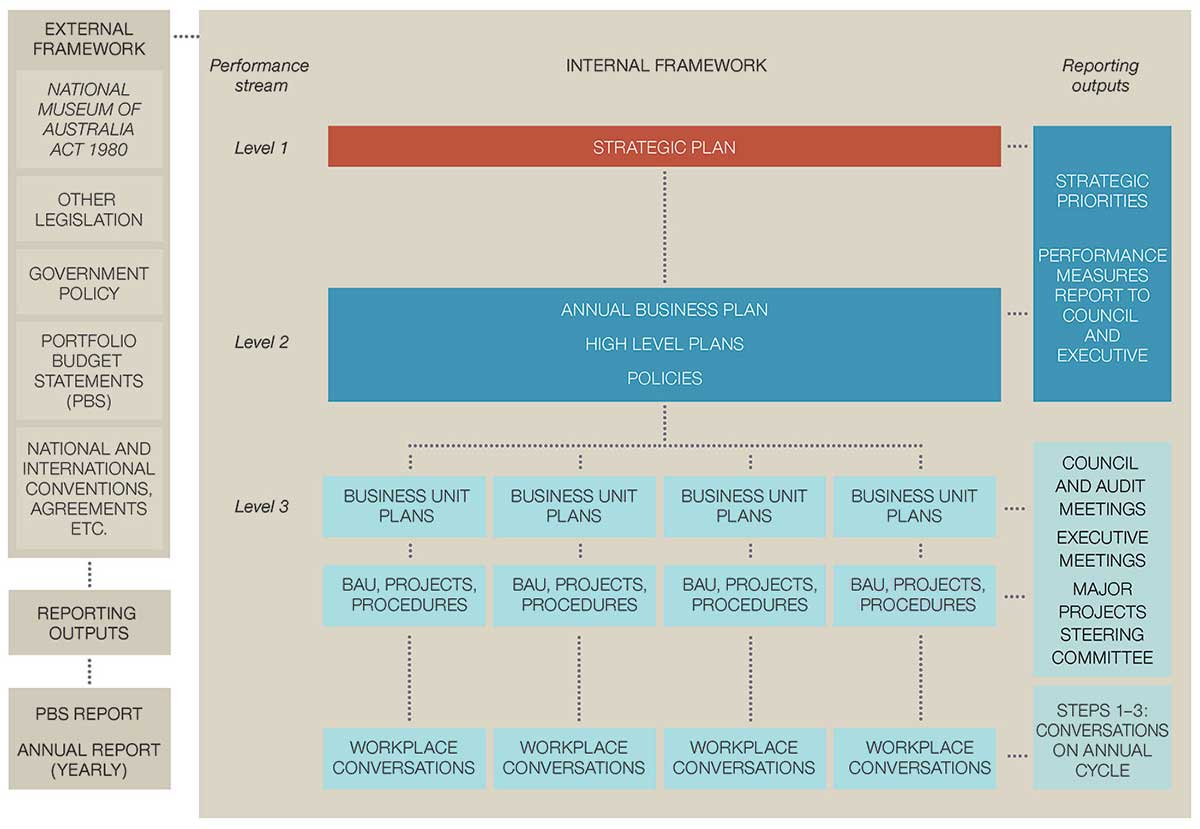The National Museum of Australia guides the delivery of its outputs through its corporate governance framework. This framework comprises the Museum’s enabling legislation and other legislative instruments, managerial and organisational structures, corporate policies and strategies, and resource management practices.
Legislation
The National Museum of Australia Act 1980 defines the broad functions and activities of the Museum. This Act established the Museum as a Commonwealth statutory authority and, along with the National Museum of Australia Regulations 2000, defines the Museum’s role, functions and powers. (For the functions and powers of the Museum, see Appendix 2).
The Commonwealth Authorities and Companies Act 1997 provides a single set of core reporting, auditing and accountability requirements for directors of Commonwealth authorities. It also deals with other matters such as banking and investment and the conduct of officers, and states that directors are responsible for the preparation and content of the report of operations in accordance with the Commonwealth Authorities (Annual Reporting) Orders 2011. The Public Service Act 1999 covers the powers of the Director of the National Museum of Australia in relation to the management of human resources.
The National Museum of Australia is a statutory authority. In 2012–13 the Museum sat within the Regional Australia, Local Government, Arts and Sport portfolio.
Governance model
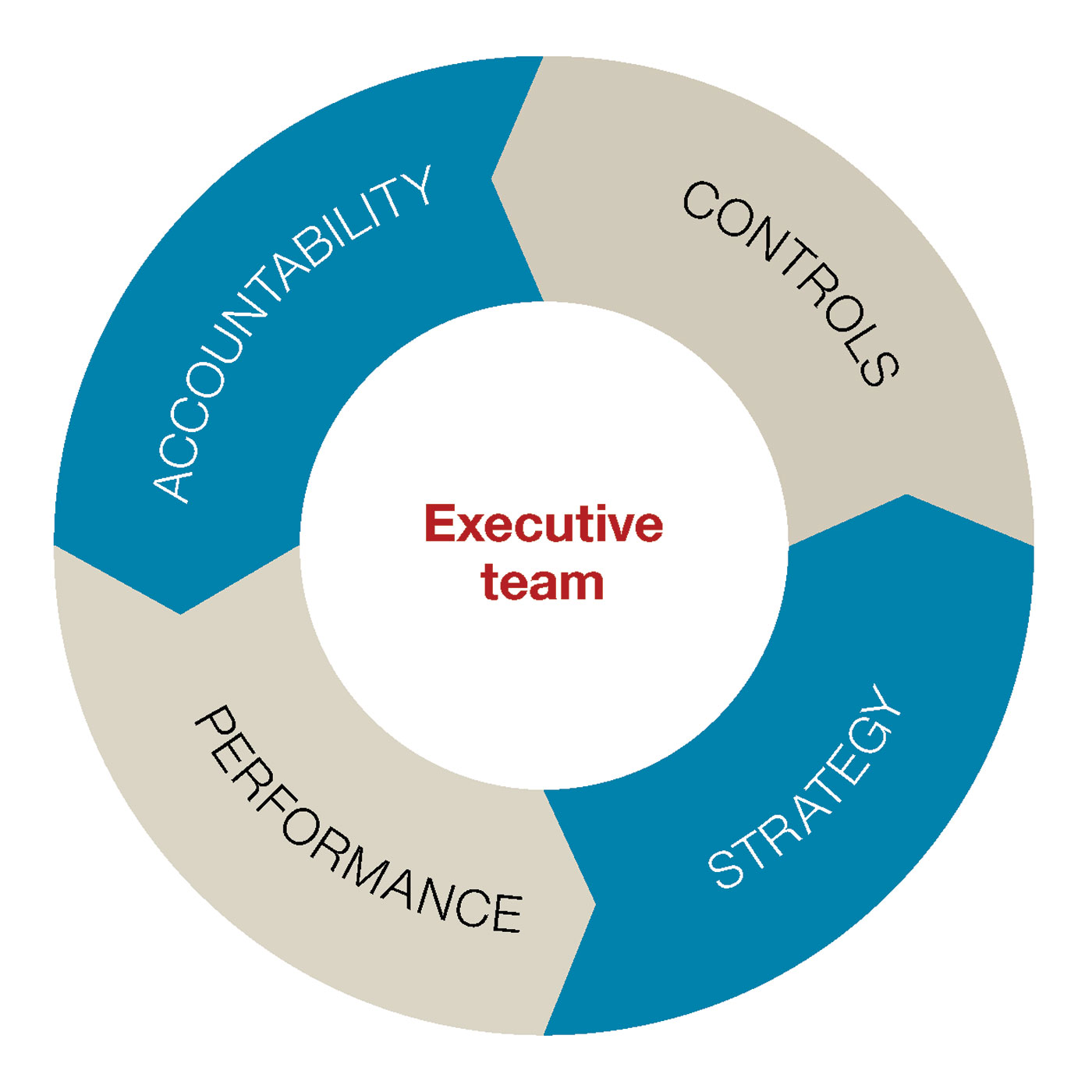
| Accountability | Controls |
|---|---|
|
Parliament Government Minister Council Other stakeholders |
Legislation Delegations Values Codes of conduct Ethics Enterprise Agreement Internal circulars |
| Strategy | Performance |
Mission |
Internal and external performance evaluation and reporting |
Council and committees
The Council of the National Museum of Australia is responsible for the overall performance of the organisation, including setting the strategic direction and establishing goals for management. The Council works with executive management in developing, executing, monitoring and adjusting the appropriate strategies, and its members are appointed under Section 13(2) of the National Museum of Australia Act 1980.
This Act provides for a Council consisting of a Chair, the Director of the Museum and between seven and 10 other members. All members are appointed by the Governor-General and, apart from the Director, are part-time appointees for terms of up to three years, although terms of appointment can be extended. The Director can hold office for a period not exceeding seven years.
The current membership of the Council provides a mix of skills and experience in the areas of history, law, education, the arts, media, tourism, Indigenous issues, marketing, business, and financial and strategic management. The Commonwealth Remuneration Tribunal determines remuneration for non-executive members. At 30 June 2013, the Council comprised the following non-executive members:
Mr Daniel Gilbert AM (Chair) has many years of experience as a commercial lawyer and company director. Since the mid-1970s he has had extensive involvement with social justice issues through work with community legal centres and public organisations and the arts. In addition to his role as Chair of the National Museum of Australia, he is Managing Partner of Gilbert+Tobin, a non-executive director of the National Australia Bank, and Chair of the University of Western Sydney Foundation.
Mr Nicholas Davie is the former Chief Executive Officer of the marketing and advertising company Publicis Mojo, and is the founder of a number of data analytics and marketing companies, including Brand Communities. He is currently a member of the Board of Trustees of the Sport and Tourism Youth Foundation and is also one of the founders and the co-chair of the children’s charity the Bestest Foundation.
Professor Rae Frances is the Dean of Arts and Professor of History at Monash University. She has an extensive record of teaching, research and publication in Australian social history and is the recipient of numerous national awards and prizes for both her teaching and publications. She is a member of the Board of the Australian Intercultural Society and a Fellow of the Academy of Social Sciences in Australia.
Professor Emeritus Andrea Hull AO has held senior roles at international, federal and state levels in cultural, heritage and education areas. She was director/CEO of the Victorian College of the Arts for 14 years. She is an executive coach and a non-executive director of a range of boards, including the Board of the Florey Institute of Neuroscience and Mental Health. She was until recently trustee of the National Gallery of Victoria and is a former board member of the Western Australian Museum and Western Australian Art Gallery.
Mr David Jones is Managing Director of Angeleno Group in Australia, running their new solar financing fund. He was previously executive director of Better Place (Australia), having been in private equity for 17 years. He is also a non-executive director of four organisations: Global Sources Limited (NASDAQ), EMR Capital, EC Group and Derwent Executive.
Professor Catharine Lumby is Professor of Media at Macquarie University where her research spans media studies, gender studies and media content regulation. Since 2004, she has worked in a pro-bono role advising the National Rugby League on cultural change and education programs for players. Before entering academia in 2000, she was a journalist and opinion writer and has worked for the Sydney Morning Herald, the ABC and the Bulletin magazine.
Mr John Morse AM is an advisor on Indigenous tourism projects, and is currently working on a 20-year master plan to develop cultural tourism in Arnhem Land. He is the owner of John Morse Art and Chair of the Mutitjulu Foundation. He worked for the Australian Tourist Commission for 20 years in Europe and Asia and was managing director from 1997 to 2001, overseeing the development of Brand Australia, the Chinese tourism market, and driving the highly successful international campaign to leverage tourism from the Sydney 2000 Olympic Games.
Dr Barbara Piscitelli AM is a freelance consultant and researcher in education and the arts. Her research explores cultural policy and childhood, children’s learning in museums, and early childhood visual arts education. She is a member of the Board of the Queensland Museum.
Mr Peter Yu is a Yawuru man from Broome, Western Australia. He is the Chair of North Australian Indigenous Land and Sea Management Alliance Ltd.
The Museum Council held five meetings during 2012–13. A senior executive staff officer from the Office for the Arts attended the meetings as an observer.
The Museum provides Council members with information on changes to corporate governance responsibilities as it becomes available, including Australian National Audit Office documents and guidelines.
The Council has policy and procedures for the disclosure and resolution of any matter for its consideration that may result in a conflict of interest. Members are required to make the nature of that interest known at the commencement of a Council meeting, and details of such disclosures are recorded in the minutes of the meeting.
The Council has established an Audit, Finance and Risk Committee to assist in the execution of its responsibilities and an Indigenous Advisory Committee to advise on sensitivities and protocols relating to Indigenous exhibitions and other matters. Details of Council and committee meetings are listed in Appendix 1.
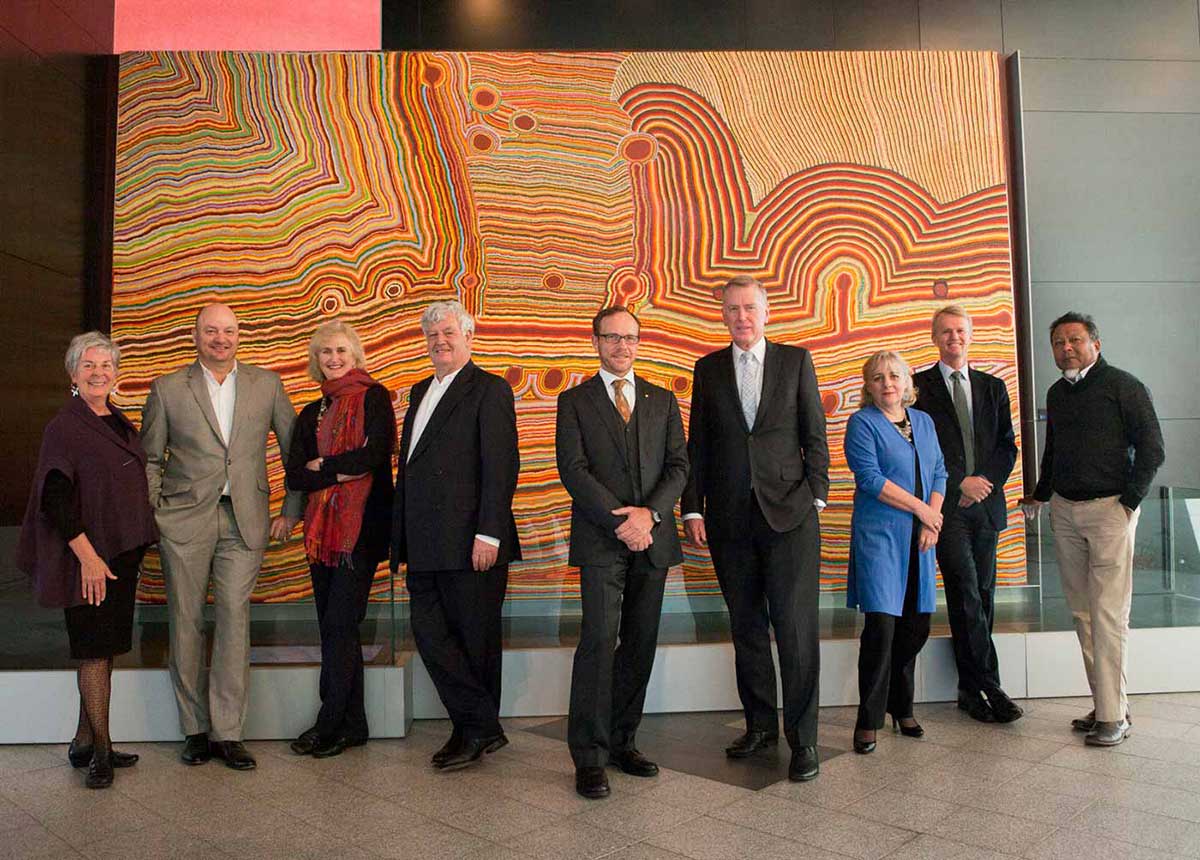
Executive management group
The executive management group, comprising the Director, two Assistant Directors, and the Chief Operating Officer, provides strategic and operational leadership to the Museum.
Andrew Sayers AM, Director
Andrew Sayers was appointed Director of the Museum in April 2010. He was previously Director of the National Portrait Gallery, Canberra, from 1998 to 2010. After graduating from the University of Sydney, he began his career at the Art Gallery of New South Wales before moving to Newcastle Region Art Gallery as Assistant Director. Before his appointment at the National Portrait Gallery he was Assistant Director (Collections) at the National Gallery of Australia. Andrew has been responsible for several exhibitions of Australian art, particularly in the areas of drawing and portraiture. He has written extensively and is the author of Aboriginal Artists of the Nineteenth Century (Oxford University Press, 1994) and Oxford History of Art: Australian Art (Oxford University Press, 2001).
Helen Kon, Assistant Director, Audience, Programs and Partnerships
Helen Kon joined the Museum in 2011 after working in senior management positions at the National Library of Australia and the State Library of New South Wales. She played a major role in many of the positive changes that have taken place in those institutions through the development of numerous community engagement programs. Prior to working in the cultural sector, Helen was education services manager in marketing at the Age newspaper. She has also worked in statewide curriculum consultancy roles and taught at secondary and tertiary levels. Her wider professional contributions have included membership and chairing of a number of national and state committees, boards and professional associations across the cultural and education sectors.
Dr Mathew Trinca, Assistant Director, Collections, Content and Exhibitions
Before he joined the Museum in 2003, Dr Mathew Trinca worked as a curator of history at the Western Australian Museum and as a consultant historian on film, conservation and public history projects. Mathew has research interests in Australian cultural history and museum practice, and was a co-editor of Country, a collection of essays on Western Australia’s environmental history, and Under Suspicion, a collection devoted to studies of internment in Australia during the Second World War.
Graham Smith, Chief Operating Officer
Prior to joining the Museum as Chief Operating Officer in November 2010, Graham Smith worked at the Royal Australian Mint for four years, firstly as Deputy Chief Executive Officer and then Acting Chief Executive Officer. He was influential in leading the Mint through major transformational change in both visitor facilities and work processes. Graham’s public service career has spanned more than 30 years, with experience in the provision of both policy and corporate advice in executive and senior management positions in the Department of Treasury, Prime Minister and Cabinet, and the Office of the Assistant Treasurer. He is active in a range of Canberra-based community organisations and sits on a number of Australian Capital Territory Government advisory boards.
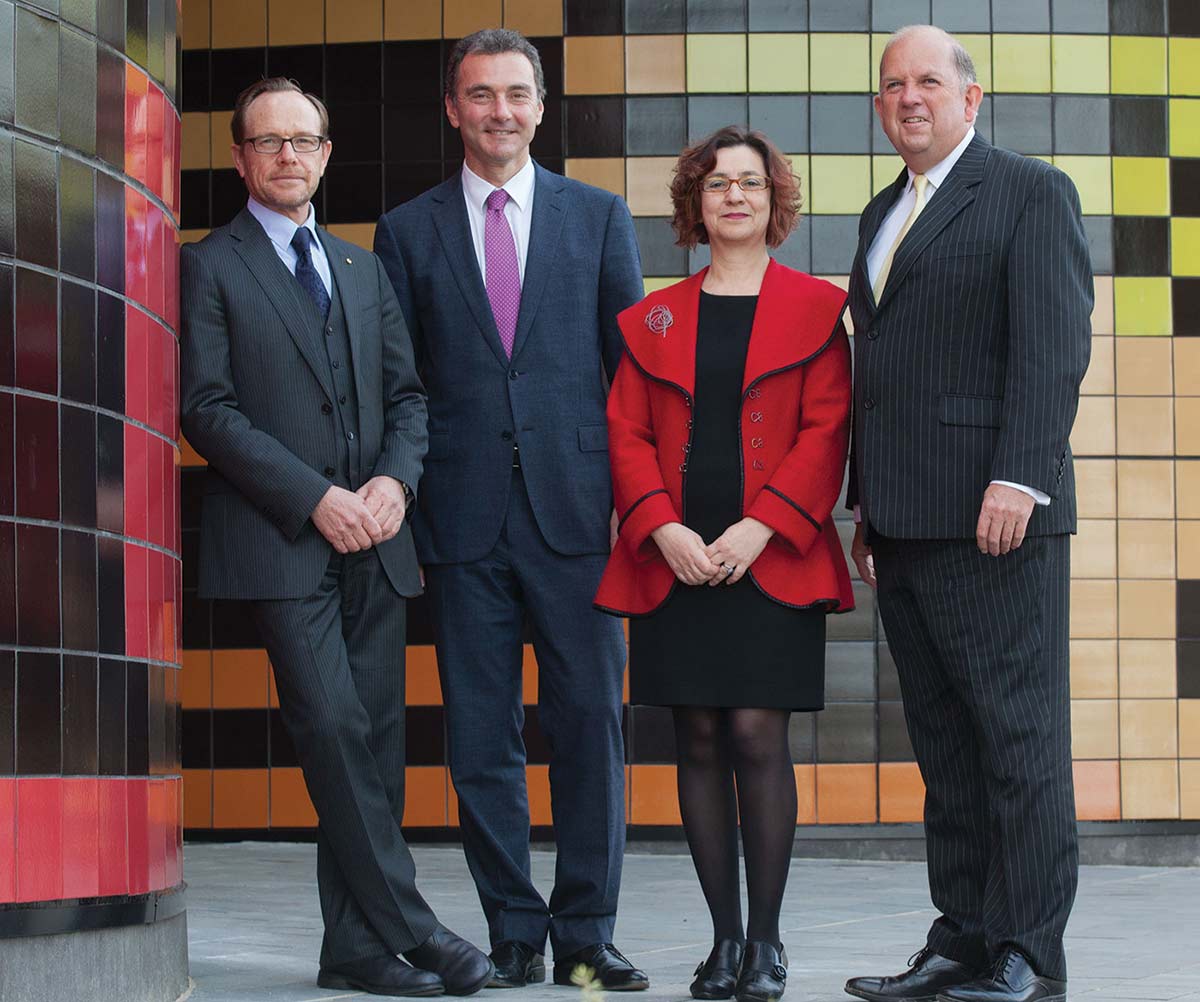
Performance management framework
The Museum’s organisational Performance Management Framework provides the structure for delivering outputs and outcomes through planning, policy and procedural work. Performance is guided by the Museum’s strategic and business plans. Performance is tracked through quantitative measures, project management practices and qualitative reports. The framework is currently under review.
The Museum reports its performance to government and other external interests through the Annual Report (yearly) and the Portfolio Budget Statements (monthly).
Strategic priorities
The Museum’s Council endorsed revised strategic priorities at their meeting in May 2012. These priorities form the basis of business in the 2012–13 reporting year. The key priorities are reported against in Part One: Executive summary — Achievement of strategic and business priorities.
Business planning
Business planning is central to the Museum’s delivery of outcomes and outputs for its stakeholders. Museum business units implement annual business plans linked to the Museum’s strategic and annual business priorities and budgets. Business planning identifies key risks and risk mitigation for the delivery of these priorities.
Project management
The Museum’s Project Management Methodology was reviewed and simplified in the financial year. A working group of key users assisted in simplifying processes while ensuring government requirements were met.
Policies and plans
The Museum has a comprehensive suite of policies and plans. These are monitored and reviewed at regular intervals and made publicly available on the Museum’s website.
Internal and external scrutiny
Internal audit
Synergy Group Australia Ltd, the Museum’s internal audit service provider, has maintained a focus on ensuring the completion of prior audit outcomes, the delivery of value-adding services and completion of the Strategic Internal Audit Plan for 2012–13. Activities included the following five compliance and process improvement audits:
- an information and communication technology (ICT) governance review to assist the Museum with the insourcing of its ICT service desk operations in December 2012. The audit was conducted in two parts, the first in October 2012 and a post-transition follow up in June 2013
- a compliance review of the Museum’s financial controls environment — examining the full purchasing cycle from procurement to accounts payable
- a compliance review of the Museum’s contract management practices — focusing on the ongoing management of contract arrangements with suppliers primarily in the exhibitions business areas
- an operations review of Facilities Management to investigate the current control environment and provide recommendations on service delivery following the completion of the Administration Extension Project
- a post-implementation review of the Digital Assets Management Software (DAMS) project.
During the year the Museum introduced a new reporting format, which aligns audit reports to the Museum’s Risk Management Framework. The Museum and internal auditors also provide regular horizon scanning briefings to the Museum’s Audit, Finance and Risk Committee on the wider audit and risk environment.
A Strategic Internal Audit Plan for 2013–14 has been approved and incorporates a two-year audit outlook for 2014–15 and 2015–16.
External audit
The Australian National Audit Office is responsible for auditing the Museum’s annual financial statements. An unqualified audit opinion precedes the annual financial statements in Part Four of this report — Audited financial statements.
Risk management
The Museum’s risk management framework is based on the International Standard on Risk Management, ISO31000:2009. The aim of the risk management framework is to assist all managers and supervisors to incorporate formal risk management assessment into their work, to enable the efficient and effective delivery of the Museum’s programs and to promote sound business practices.
The Museum’s risk management framework focuses on categories including workplace health and safety, preservation of the National Historical Collection, damage to the building and infrastructure, financial loss, fraud, loss of reputation and damage to the environment. The Museum is committed to fostering a culture of integrity, safety and security throughout the organisation, and has developed, and continues to maintain:
- a robust risk management policy
- strategic and corporate risk management plans
- business unit risk management planning
- event risk management plans.
The Museum’s executive management reviews the key enterprise risks on a monthly basis. This ensures transparency of enterprise risks, which are subsequently discussed with the Audit, Finance and Risk Committee.
The Museum continues to participate in Comcover’s Annual Risk Management and Insurance Benchmarking program and as a result received an increased discount on its 2013–14 premium.
Fraud control
The Museum has in place fraud prevention, detection, investigation, reporting and data collection procedures and processes that, together with the Fraud Risk Assessment and Control Plan, meet the specific needs of the Museum and ensure compliance with the Commonwealth Fraud Control Guidelines.
The Museum’s Fraud Risk Assessment and Control Plan is endorsed by Council and reviewed every two years. It is scheduled for review in 2013–14. Fraud is reported as a standing item to the Audit, Finance and Risk Committee. There have been no reported instances of fraud at the Museum during 2012–13.
Fraud awareness training is provided to all staff as part of their induction and ongoing general awareness training.
Freedom of information
Part 2 of the Freedom of Information Act 1982 (FOI Act) established an Information Publication Scheme (IPS). The Museum is subject to the FOI Act and is required to comply with the IPS requirements.
In accordance with the IPS, the Museum is required to:
- publish an agency plan
- publish specified categories of information
- consider proactively publishing other government information
- publish this information (or details of how to access it) on a website
Details of the Museum’s compliance with the IPS requirements during 2012–13 are available in Appendix 4.
There were five requests for access to documents under Section 15 of the FOI Act during 2012–13.
Privacy legislation
The Museum provides information as required to the Privacy Commissioner for inclusion in the Personal Information Digest. No reports by the Privacy Commissioner under Section 30 of the Privacy Act 1988 concerning actions or practices by the Museum were received during 2012–13.
Formal decisions/notifications/ministerial directions
The Museum received no formal notifications or ministerial directions from the Minister for Finance and Deregulation during 2012–13. Ministerial directions from previous financial years that continue to apply in 2012–13 relate to the Commonwealth Procurement Rules and annual reporting requirements for Commonwealth authorities.
There are no general policies of the Australian Government that were notified to the Museum before 1 July 2008 under Section 28 of the Commonwealth Authorities and Companies Act 1997 (CAC Act), and there are no General Policy Orders that apply to the Museum under Section 48A of the CAC Act.
Significant events, judicial decisions and particulars of reports
The Museum did not advise the Minister of any significant events during 2012–13, in accordance with the CAC Act. There have been no judicial decisions or decisions of administrative tribunals that have had, or might have, a significant effect on the operations of the Museum. There have been no amendments to legislation that affect the operation or structure of the Museum.
No reports about the Museum were made by the Auditor-General, a Parliamentary committee, the Commonwealth Ombudsman or the Office of the Australian Information Commissioner.
Legal actions
In 2012–13 the Museum did not settle any claims as a result of any legal action.
Ombudsman
No new issues or matters about the Museum were referred to, or raised with, the Commonwealth Ombudsman’s Office.
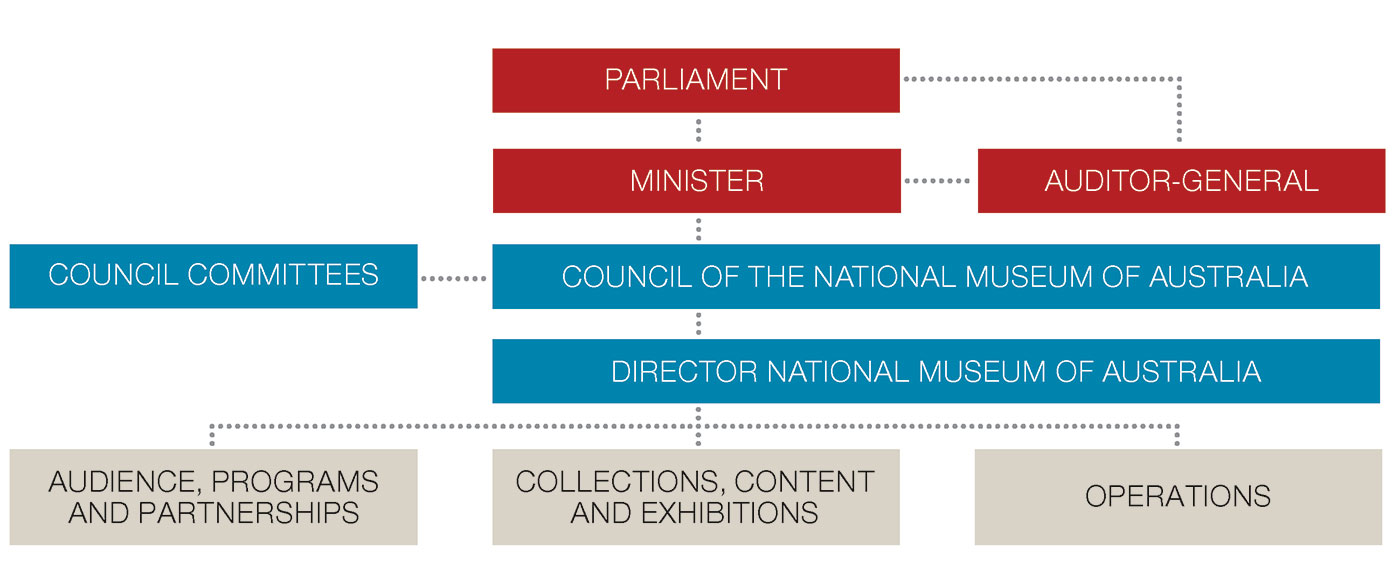
![National Museum of Australia organisation chart as at 30 June 2013. Director, Andrew Sayers. Executive Support Manager, Stephanie Bull. Audience, Programs and Partnerships Division: Assistant Director, Helen Kon. Development, Head, Monica Lindemann. Learning Services and Community Outreach, Head, David Arnold. Communications and Marketing, Head, Karen Dempster (a/g). Visitor Services and Front of House, Head, Tina Brandt. Copyright and Production Services, Manager, Denis French. Publishing, Manager, Julie Ogden. Multimedia and Web, Manager, Tikka Wilson. Collections, Content and Exhibitions Division, Assistant Director, Mathew Trinca: Conservation, Manager, Vicki Humphrey. Registration, Head, Sara Kelly. Aboriginal and Torres Strait Islander Peoples, [no entry]. Australian Society and History, Head, Guy Hansen. People and the Environment, Head, Kirsten Wehner. Collections Unit, Head, Ian Coates. Exhibitions and Gallery Development, Manager, Rebecca Coronel. Research Centre (and Library), Manager, Anne Faris (a/g). Operations Division, Chief Operating Officer, Graham Smith. Finance, Chief Finance Officer, Ian Campbell (a/g). Information Services and Assurance, Chief Information Officer, Stephen Delaney. Facilities, Manager, Greer Gehrt. Human Resources, Manager, Anne Mayberry. Design and Environment, Manager, Greer Gehrt. Legal Services, Manager, Fiona Dalton/Belinda Carman. Retail Operations, Manager, Stephen Quinn.](https://www.nma.gov.au/__data/assets/image/0008/537524/Org-chart-1400w.jpg)
